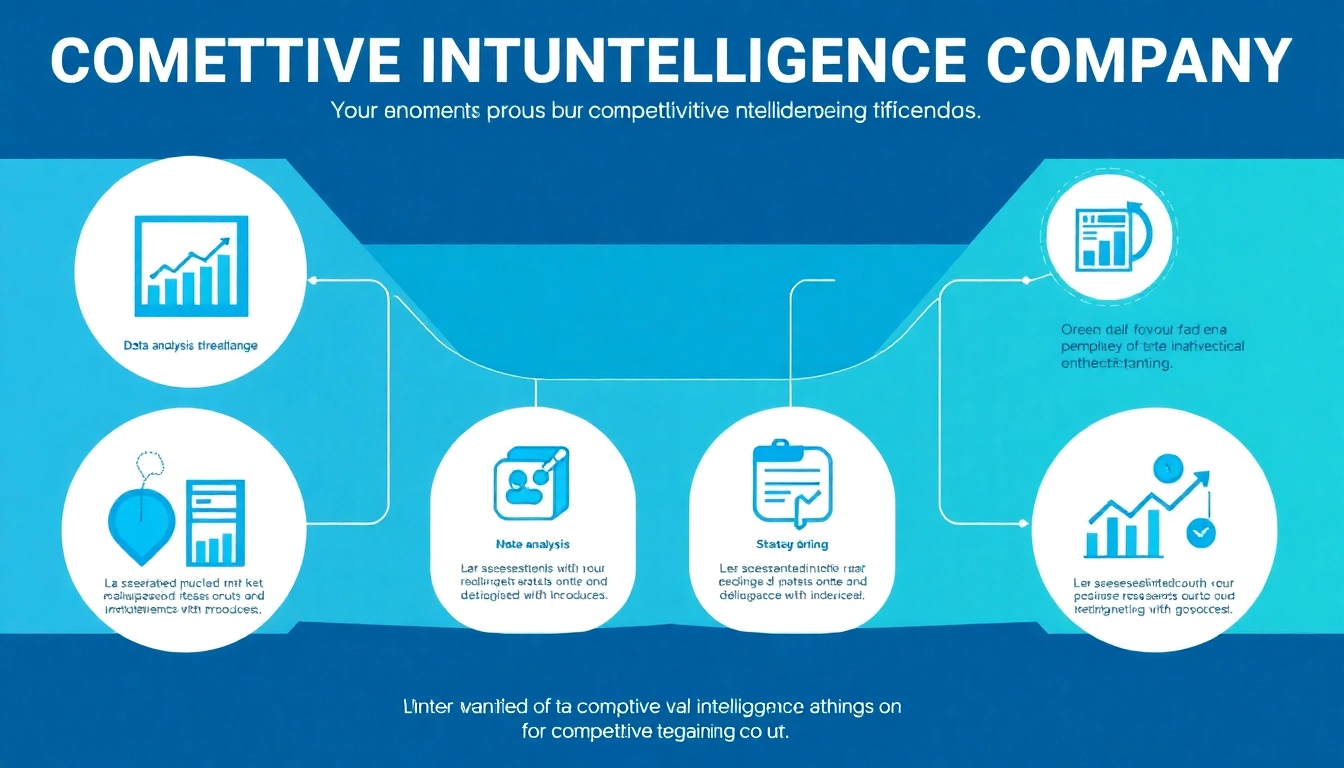Understanding AI Outreach Agents
Definition and Role of AI Outreach Agents
In the ever-evolving world of sales and marketing, the introduction of AI outreach agents represents a significant leap forward in how businesses connect with potential customers. AI outreach agents are sophisticated applications designed to automate routine tasks that sales representatives typically manage. For instance, they can execute manual and repetitive tasks on behalf of sales teams, allowing the human workforce to prioritize high-value activities like building relationships and closing deals. These agents leverage machine learning, natural language processing, and data analytics to streamline outreach efforts, making them integral to modern sales strategies.
How AI Outreach Agents Streamline Sales Processes
AI outreach agents function through several advanced processes that enhance the efficiency and effectiveness of sales teams. They are capable of automatically sending personalized emails, scheduling meetings, and managing follow-ups, significantly reducing the administrative burden on sales personnel. By analyzing customer data, AI outreach agents can segment prospects, identify the best times to reach out, and tailor messages to different audience groups. This level of automation not only shortens sales cycles but also increases the potential for conversions by ensuring that communications are timely and targeted.
Key Benefits for Sales Teams
Utilizing AI outreach agents comes with several key benefits that transform traditional sales operations:
- Increased Productivity: By handling repetitive tasks, AI outreach agents allow sales reps to focus on strategic activities, ultimately driving productivity.
- Improved Lead Management: AI agents can qualify leads based on predefined criteria, enabling teams to prioritize their outreach based on potential ROI.
- Enhanced Personalization: With the ability to segment audiences and analyze past interactions, these agents facilitate highly personalized communication, which fosters better engagement.
- Data-Driven Insights: AI outreach agents provide analytics that reveal patterns and trends in customer behavior, aiding in informed decision-making and strategic planning.
Implementation of AI Outreach Agents
Choosing the Right AI Outreach Solutions
Implementing AI outreach agents begins with selecting the solutions that best fit your organizational needs. Various providers offer tailored functionalities, so businesses should evaluate factors such as integration capabilities with existing systems, AI flexibility, and the types of tasks the agent can automate. Popular solutions include AI outreach agents offered by companies like Outreach and Regie.ai, which provide comprehensive tools for automating tasks ranging from email campaigns to social media outreach.
Integrating AI Outreach Agents into Existing Workflows
Once the right solution is in place, the next step is integration. This process requires collaboration between sales, marketing, and IT departments to align the AI’s functionalities with established workflows. To ensure a successful integration, companies should:
- Map Existing Processes: Understanding current workflows helps identify where AI can add the most value.
- Set Clear Objectives: Define what success looks like with AI integration—this could be reduced response times or a specific increase in lead conversions.
- Train Your Team: Offering comprehensive training and support will ease the transition and ensure that team members are comfortable using the new technology.
Measuring Success and Performance Indicators
To gauge the efficiency and effectiveness of AI outreach agents, organizations need to develop clear performance indicators. Key metrics to consider include:
- Lead Conversion Rates: Tracking how effectively AI-led outreach translates into closed deals offers insight into the agent’s impact.
- Response Rates: Measuring how many prospects engage with the outreach communications indicates the effectiveness of the messaging.
- Time Savings: Assessing the reduction of time spent on manual tasks provides a clear picture of productivity gains.
Common Challenges and Solutions
Overcoming Resistance from Sales Teams
Implementing AI in sales processes often meets resistance from teams misinformed about the technology. Resistance can stem from fears of job loss or skepticism regarding AI’s effectiveness. To overcome these challenges, organizations should:
- Communicate the Benefits: Clearly articulate how AI agents enhance rather than replace human efforts, highlighting productivity and strategic advantages.
- Involve Teams Early: Engaging sales teams during the selection process fosters buy-in and allows for tailoring AI features to their specific needs.
- Share Success Stories: Presenting case studies of successful AI implementations can help alleviate concerns and promote acceptance.
Addressing Data Privacy Concerns
Data privacy is a significant concern when deploying AI solutions in outreach strategies. Organizations must ensure compliance with regulations such as GDPR to protect sensitive customer information. Best practices include:
- Transparency: Informing customers about how their data is being used builds trust.
- Data Security Measures: Implementing strong cybersecurity protocols to protect customer data from breaches and unauthorized access is essential.
- Regular Audits: Conducting periodic reviews of data practices helps ensure compliance with privacy laws.
Maintaining Human Touch in Sales
One common apprehension regarding AI outreach agents is the potential loss of the human touch in sales interactions. To address this, companies should prioritize:
- Combining AI with Human Interaction: Use AI for routine tasks while reserving complex interactions for human representatives.
- Personalizing Communications: Ensure that AI tools can still allow for personalized messages that resonate with clients for a more engaging experience.
- Feedback Loops: Gathering feedback from customers about their experiences can guide continuous improvements in the balance between AI and human interactions.
Innovative Use Cases for AI Outreach Agents
Case Study: AI Outreach in Action
One practical application of AI outreach agents can be seen through a mid-sized tech company that integrated AI tools into their sales strategy. By implementing AI to handle initial outreach and follow-ups, the company experienced a 40% increase in lead engagement rates and a 25% increase in closed deals within six months. The AI agents successfully managed initial communications, allowing sales representatives to focus on nurturing relationships and final negotiations. This case demonstrates the tangible benefits of integrating AI outreach into sales workflows.
Industry-Specific Applications
Different industries can benefit from AI outreach agents in unique ways:
- Real Estate: AI can automate property outreach to potential buyers, manage open house invitations, and follow up on leads.
- Healthcare: AI outreach agents can help healthcare providers efficiently manage patient communications, schedule appointments, and follow up on reminders.
- Finance: In the finance industry, AI can assist in customer engagement, managing financial advice outreach, and ensuring clients receive timely updates on their investments.
Future Trends in AI Outreach Technology
The future of AI outreach technology is likely to see advancements in several areas:
- Enhanced Natural Language Processing: Improvements in language understanding will allow AI agents to engage in more natural and human-like conversations.
- Integration with Advanced Analytics: AI will increasingly leverage deep analytics to provide even more tailored outreach based on complex customer data.
- Omnichannel Outreach: Future AI agents will be able to manage communications across multiple channels (email, social media, messaging apps) seamlessly, providing a cohesive customer experience.
Conclusion and Future Outlook
Continuous Improvement with AI Outreach Agents
The integration of AI outreach agents is not merely a trend but a necessary evolution in the sales landscape. Organizations must embrace these technologies while continually seeking ways to refine their approaches. This may involve adapting to new customer data, incorporating feedback, and consistently analyzing performance metrics to optimize outreach strategies.
Preparing for the Next Wave of Sales Technology
As AI technologies continue to advance, businesses should prepare for the next wave of sales innovations. This preparation includes investing in training for sales teams, ensuring compliance with ever-evolving regulations, and being open to experimenting with new AI functionalities to stay ahead in the market.
The Evolving Landscape of Sales and AI
The intersection of sales and AI will continue to evolve, offering exciting opportunities for organizations willing to innovate. By striking the right balance between automated outreach through AI agents and personal engagement, businesses can not only streamline processes but also foster stronger relationships with their customers, ultimately driving sales success in an increasingly competitive landscape.



